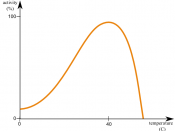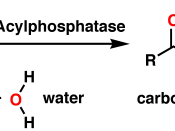EnzymesEnzymes are the catalysts used by cells to trigger and control particular chemical reactions. They are huge protein molecules. Enzymes can build up or break down other molecules. Enzymes are formed at cell sites called ribosomes. Amino acids are brought to the ribosomes and strung together in a precise way to form these enzymes. These then float free within the cell or into nearby body areas where they are needed. They are not permanently changed by the reactions they catalyze. Without enzymes, chemical reactions necessary for life would not occur at a rate sufficient for sustaining life.
The molecules that enzymes act on are called substrates. The site where a substrate binds to an enzyme is called the active site. Because of their shape, enzymes bind to specific substrates. An enzyme is unchanged by the reaction and can be reused, lowers activation energy needed by the cell, and the substrate along with the enzyme bind to the active site.
Some enzymes help plants and animals digest food. Enzymes also help plants and animals get energy from food. Since enzyme molecules are larger than those of their substrates are, chemists believe that their catalytic action occurs only at a small active site on the enzyme. The substrate and the enzyme fit together at the active site, which provides perfect pH and salinity, as in a lock-and-key fashion. Then the chemical bond holding the substrate together is weakened and the substrate molecule is broken down into smaller products. After disengagement, the enzyme is free to perform its catalytic action again and again. If a coenzyme is needed to reduce a substrate, then it floats to the basic molecule when a reaction is about to take place, links with the enzyme and substrate, and then disengages itself from the enzyme when the...


